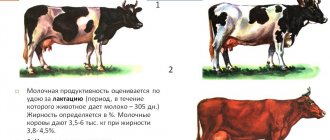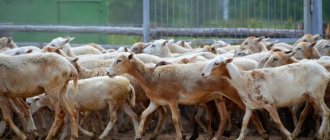Blood diseases are one of the most common ailments among animals. Piroplasmosis is an infectious disease caused by damage to red blood cells by parasitic mites. Often seen in cows, sheep, goats and other animals that spend a lot of time grazing on grass. If timely assistance is not provided, the disease can be fraught with irreversible consequences for individuals, including death. To protect cattle from an unwanted fate, it is necessary to recognize the symptoms of bovine piroplasmosis in time and carry out appropriate treatment.
What kind of disease is this and what are its features?
The disease has other names, such as babesiosis, Texas fever, chikhir. Its causative agents are parasites called piroplasmas. In the animal's body they multiply by cell division. Parasitic ticks transmit bacteria through lymph and eggs. The greatest number of infections occurs from April to October - during the period of grazing of herds on pastures.
Piroplasmosis of cattle and other animals most often occurs in an acute form and develops within 5-7 days. Relapses and chronic forms of the disease are possible in representatives who have already had an infection once. But, unlike the primary disease, they do not pose such a strong threat to livestock.
If treatment is incorrect or completely absent, the individual dies on average after 7 days.
Symptoms
The incubation period of the disease lasts from 10 to 12 days, then the disease develops into an acute form, in which the following symptoms can be observed:
- Infected livestock lose their appetite, while the animals consume large quantities of water;
- the temperature rises to 42 degrees;
- movements are difficult, the cow cannot move at the same speed as healthy individuals, and often lies on the ground;
- reduction in the amount of dairy products;
- cardiopalmus;
- when examining the animal, an increase in the blood vessels of the mucous membranes is revealed; on the second day of acute piroplasmosis, hemorrhages begin;
- the cow cannot hold her head in a normal position, and lacrimation is also observed.
An additional symptom is indigestion, darkening of urine due to a large amount of protein.
A cow with piroplasmosis.
During infection, not only the kidneys and liver are affected, but the functioning of the heart is also disrupted. The disease ends with extensive cerebral hemorrhage. If the animal is not helped in a timely manner, it most likely will not survive.
How Texas fever was discovered
The history of the discovery of the disease begins in the 19th century. The first studies were carried out in Southern China using hunting and domestic dogs as an example. Scientists were interested in the symptoms of the disease, similar to jaundice, which had more serious consequences for animals.
Until 1898, the disease was considered independent. Professor R. Korch managed to find out the true nature of its origin: when examining the blood of infected dogs, he discovered modified red blood cells. They had an oval, sometimes pear-shaped shape and were distinguished by a pale tint. After analyzing the blood composition of several dogs with similar symptoms, it was determined that the cause of the disease was blood damage by parasites.
In 1901, a scientist named Logsbary first mentioned the disease carrier, the tick, in his scientific work.
In 1905, the first experiments were carried out at the Transvaal Institute to identify the predisposition to infection of certain groups of animals. In the course of research, it was found that babesiosis can also affect cattle, goats, sheep, rats, horses, and cats. The foxes' immune system turned out to be more resistant to the disease.
In Russia, the disease was first discovered in 1909 - Professor Yakimov recognized it in a hunting dog brought from Azerbaijan.
Research conducted in 1989 confirmed that the disease can be spread by a variety of vectors, insects and bacteria. Depending on the nature of the infection, the disease occurs in different forms and provokes various consequences: from poor condition to death. On the territory of Russia, only one carrier of piroplasmosis has been found - ticks. The disease contracted from these parasites, as a rule, is acute and develops rapidly. Most often leads to death.
In 2000, the geo-location of the disease across the globe was established. Piroplasmosis is most widespread in the South African zone and the subtropics. In the CIS, the disease is relatively less common, but still poses a great danger to animals.
Spread of the disease
As a rule, cattle become ill with babesiosis (pyroplasmosis) in places where there are large numbers of ticks (carriers of pathogens). They exist not only in the Russian Federation, but also in other countries. Outbreaks of piroplasmosis are recorded from time to time in the south of Russia:
- in Crimea;
- in the North Caucasus;
- in Transcaucasia;
- in the Voronezh and Kursk regions;
- in the Central Asian republics.
The main vector of bovine babesiosis is the single-host tick Boophilus calcaratus. Depending on the region, the insect gives 2-3 generations. This is why there can be so many outbreaks of bovine piroplasmosis. The disease begins in early spring (April-May), summer (June), and autumn (early August).
Attention! If cows are kept in stalls all year round, they rarely suffer from bovine babesiosis. The main thing is not to harvest grass in areas infested with ticks.
Animals that have lived in a certain area since birth suffer babesiosis more easily, as they develop immunity. But imported livestock may die. Old and tired cows are more difficult to tolerate the disease. If animals are pregnant, they often experience spontaneous abortion.
To eradicate the source of bovine piroplasmosis, natural pastures must be treated with special preparations.
A disease outbreak is when a pathogen affects a large number of cattle in a certain geographic area at one time or another of the year. If work on treating animals is not started, the disease may spread to other regions and even countries. The duration of an outbreak of piroplasmosis can last from several days to several years.
If at least one case of an infectious disease unusual for this area is recorded in a region, this is also considered an outbreak, which must be reported to the appropriate veterinary services. They will examine the sick animal and take the necessary measures.
Where is there a chance of contracting piroplasmosis?
The most likely places of infection are areas with uncultivated vegetation - plantings, thickets, unkempt fields. Individuals from the herd that graze on pastures are also at risk. Thus, piroplasmosis in cows can occur as a result of spending a long time among dense grass - there is a higher probability of parasitic ticks living there.
Babesiosis in goats and sheep often occurs after the bite of an infected tick, since the immunity of these animals is quite weakened to the pathogen. In these species, the likelihood of catching the disease is high everywhere, so owners are advised to take preventive measures to avoid trouble.
Less commonly, the source of infection is already sick representatives. Farmers need to carefully monitor the condition of their livestock. If symptoms of the disease are detected, the individual must be isolated from the herd.
Causes of the problem
Cattle are infected when an animal is bitten by a tick whose saliva contains parasites. Babesia spread throughout the body through the bloodstream, penetrating the cellular structures of the blood and tissues. The main localization of Babesia is erythrocytes and leukocytes. One red blood cell can contain 1-3 parasites at the same time. The source of infection is infected, sick animals, latent carriers, ticks. The rapid spread of piroplasmosis is facilitated by high humidity, rainy weather, and the lack of preventive treatments of forests and pastures from blood-sucking insects.
Weakened animals and young animals with weakened immune potential are at risk.
Spread of Babesia
The parasite can live in an animal's body for up to 1 year. For its existence, it requires heat and a viscous environment (the surface of the mucous membranes). In such conditions, piroplasms successfully exist, feed and reproduce. Outside the body, parasites die within a few hours. The minimum temperature at which Babesia remains viable is 4 degrees Celsius. Under these conditions they die within a month.
Most pests accumulate in erythrocytes - red blood cells, so they find out about infection after a blood test.
The main carriers in Russia are ixodid ticks. In tropical regions, infection can also be transmitted through malarial plasmodia.
How does infection manifest itself?
The scenario for the development of piroplasmosis in the body is as follows:
- A tick infected with piroplasmosis attaches itself to the body.
- The parasite enters the body of livestock and infects red blood cells.
- Infected blood cells begin to divide.
- During reproduction, Babesia causes the destruction of red blood cells, which in turn leads to changes in all internal processes of the body
The duration of the incubation period of piroplasms ranges from 5 to 30 days, depending on the favorable conditions for the life of the parasite.
In different animals, the course of the disease is somewhat different and has its own characteristics. Thus, bovine babesiosis deals the strongest blow directly to the circulatory system, and the destruction of their red blood cells occurs quite quickly, in 4-6 days. As a consequence, the development of hemoglobinuria.
Important
If a parasitic disease is successfully treated, the hemoglobin disorder remains in the body for life; it cannot be completely cured. It is because of this circumstance that babesiosis in cows is a dangerous disease.
Piroplasmosis in sheep occurs in the same way as in cattle, but it causes the most harm to animals due to disruption of redox processes. Oxygen metabolism is disrupted, resulting in the accumulation of nitrogen and carbon dioxide in the cells. The result is muscle weakness, tremors, renal anemia, weight loss, yellowing of the mucous membranes.
Piroplasmosis in goats leads to a disorder of the acid-base balance. Blood microcirculation is disrupted. The cardiovascular system suffers the most. Due to abnormal processes in the body, hemorrhages occur in the internal organs. In more severe cases, the disease causes pulmonary edema and heart failure, which in turn leads to death.
Mostly adults suffer from the disease. Infected young animals tolerate pathogens easily, often in a latent form. After this, the cattle develop immunity, which helps to successfully cope with the disease in the event of re-infection.
Babesiosis in cattle and other animals has pronounced symptoms. They appear several hours after infection and get worse as the parasites multiply in the body.
- The pet's temperature rises sharply to 40 degrees.
- My eyes begin to water. Over time, the eyeball and mucous membranes turn yellow.
- Urine takes on a brownish-red, sometimes dark purple, even black, hue.
- Strength leaves the body, muscle tissue weakens.
- The cattle refuses to take food and water.
- Problems begin in the functioning of the heart, arrhythmia occurs.
- Hemoglobin in the blood rapidly decreases.
- Metabolism is disrupted.
- A sick pet suffers from constipation, which is replaced by diarrhea. Often, mucus and blood clots are released along with the stool.
- Pregnant animals experience miscarriages.
As the parasites multiply, the condition of the sick cattle worsens. Blood begins to seep into the mucous membranes. Swelling of the epithelial tissues is observed.
- The muscles become weak, dry and flabby.
- Lymph nodes swell and acquire a dark brown tint.
- The lungs swell, especially on the side on which the sick pet lies.
There is an enlargement of the heart, spleen and liver. The bile becomes thick and viscous. This leads to deformation of the gallbladder. The kidneys also enlarge: hemorrhages are often observed under the membrane.
Animals suddenly lose weight, which leads to dystrophy. In severe forms of the disease, brain cells begin to die in its final stages.
Important
Most often, the disease develops rapidly. In severe forms, death occurs on average a week after infection. This situation is considered favorable in terms of the short duration of the torment.
If adequate assistance is provided in a timely manner, the livestock’s life can be saved, but rehabilitation takes quite a long time. It takes from five months to one year for complete restoration of living creatures. During this period, the patient must be under the supervision of a veterinarian.
How does infection occur?
Livestock living in the southern territories are most often affected by chikhir. In the summer months, the risk of infection increases significantly due to the constant presence of animals on pasture lands.
Even housing in a stall does not guarantee against infection. Ticks enter the barn along with the mown grass.
Arthropods are characterized by resistance to negative temperatures, and they can go without food for as long as two years. Ticks settle in tall grasses in anticipation of animals. The bite leads to the entry of piroplasms into the circulatory system, where their active reproduction begins.
The parasite's favorite place is the epithelial tissue of the intestinal region, which leads to disorders of the digestive system. If the animal is not treated, the babesia penetrates the salivary glands, and then the internal organs of the livestock are damaged.
Establishment of infection
Diagnosis of piroplasmosis is carried out in veterinary clinics: if infection with parasites is suspected, a blood smear is taken from the animal. It is fixed with alcohol and painted with a special solution. Next, the pathogen is analyzed and searched under a microscope, where the virus is studied. It is determined by its appearance: it is quite large in size and has an oval or pear-shaped shape.
Piroplasms are located in the center of the cell at a right angle. When painted, the affected bodies of the circulatory system have a duller shade compared to healthy red blood cells.
It is important to remember that at the first symptoms of the disease, such as fever, weakness, lack of appetite, you must immediately contact a veterinarian. You should especially carefully monitor the condition of your pet during the period of grazing on land in areas where there are a large number of ticks. A timely visit to a doctor will help save the patient’s life.
Main signs of the disease
Piroplasmosis in cows is always very acute. After infection through a tick bite, the latent period is 8-12 days. From the first days of illness, body temperature rises to 42 degrees, the animals feel depressed. They refuse food, stop chewing, and constantly drink water. Cows have a hard time being out on pasture. It becomes difficult for them to walk, so they lag behind the herd, constantly lie down, and the amount of milk yield decreases.
Signs include increased heart rate up to 120 beats per minute and heavy breathing. Blood vessels appear on the mucous membranes, and after 2 days a large number of spotty hemorrhages form. Infected cows constantly stand with their heads tilted to the floor and have increased lacrimation. Symptoms are also characterized by disruption of the gastrointestinal tract. Animals suffer from diarrhea and constipation.
On the second day after the increase in body temperature, hemoglobinuria begins, under the influence of which the urine becomes dark cherry and contains a large amount of protein. Urination becomes more frequent.
Treatment for piroplasmosis
First of all, it is necessary to eliminate the source of infection by removing the attached ticks. To do this, you should seek help from a veterinarian. Under no circumstances should you try to remove the carrier yourself - inept actions can cause even more harm to the animal.
Then the doctor prescribes treatment. Most often, drugs are administered intravenously and intramuscularly. The table contains a list of popular medications and how to use them.
| Name | Method of administration | Dosage |
| Azidin | Intramuscularly | 3 mg per 1 kg of body weight; twice with an interval of 24 hours |
| Imidocarb | Intramuscularly into the neck | 2-2.5 ml per 100 kg body weight, once |
| Flavacridine | Intravenously | 3-4 mg per kg body weight, every 12 hours until the condition improves |
| Hemosporidine | Subcutaneously | 0.0005 g per 1 kg of body weight, diluted in 10 ml of boiled water, once |
| Trypanblau | Intravenously | 0.005 g per 1 kg of body weight, diluted in 10-15 ml of sodium chloride, once |
For bovine piroplasmosis, treatment should first of all be aimed at stabilizing the functioning of the circulatory system. For this purpose, concomitant medications may be prescribed.
Handling sick people
As a precaution, the infected individual must be isolated during treatment. A sick animal requires proper care: it is provided with a warm, dry room without drafts. Poor quality food and concentrated feed are excluded from the diet.
The main part of the patient's diet should be good grass or hay, depending on the period of illness, as well as root vegetables. During treatment, the infected person requires rest, so he is not turned out to pasture.
In the event of death, the most important task is to prevent further spread of parasites. The corpse must be buried deep underground, in a place inaccessible to other individuals, or even better, burned.



